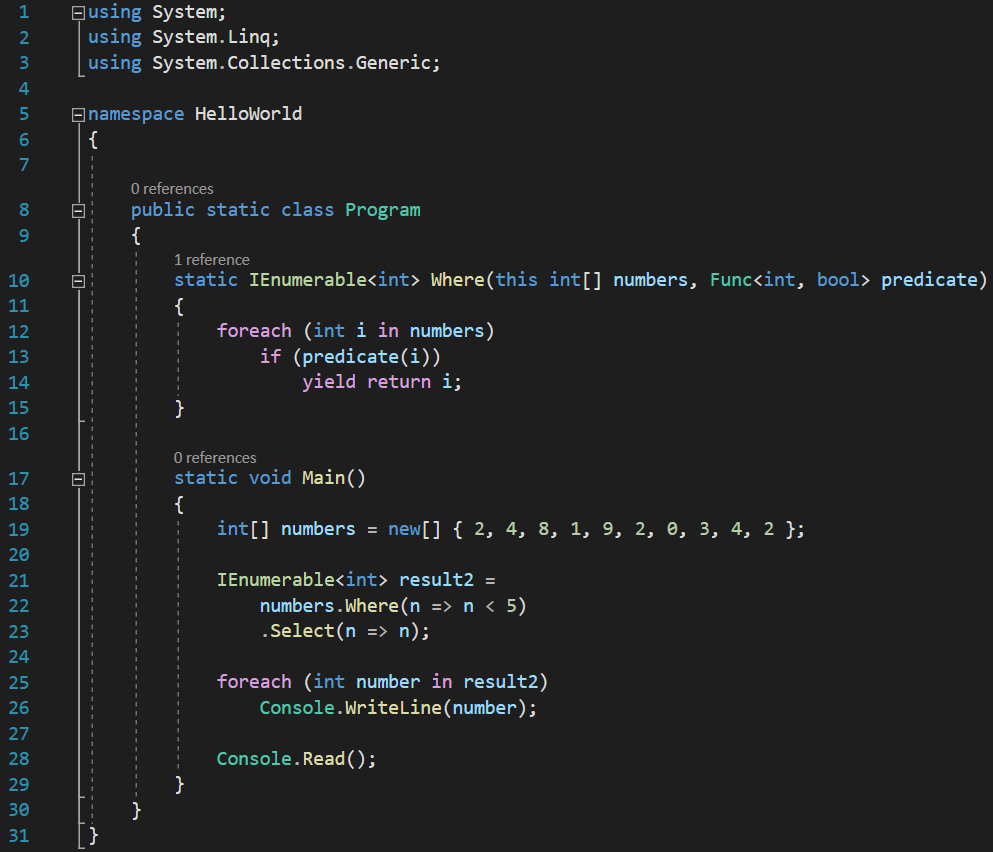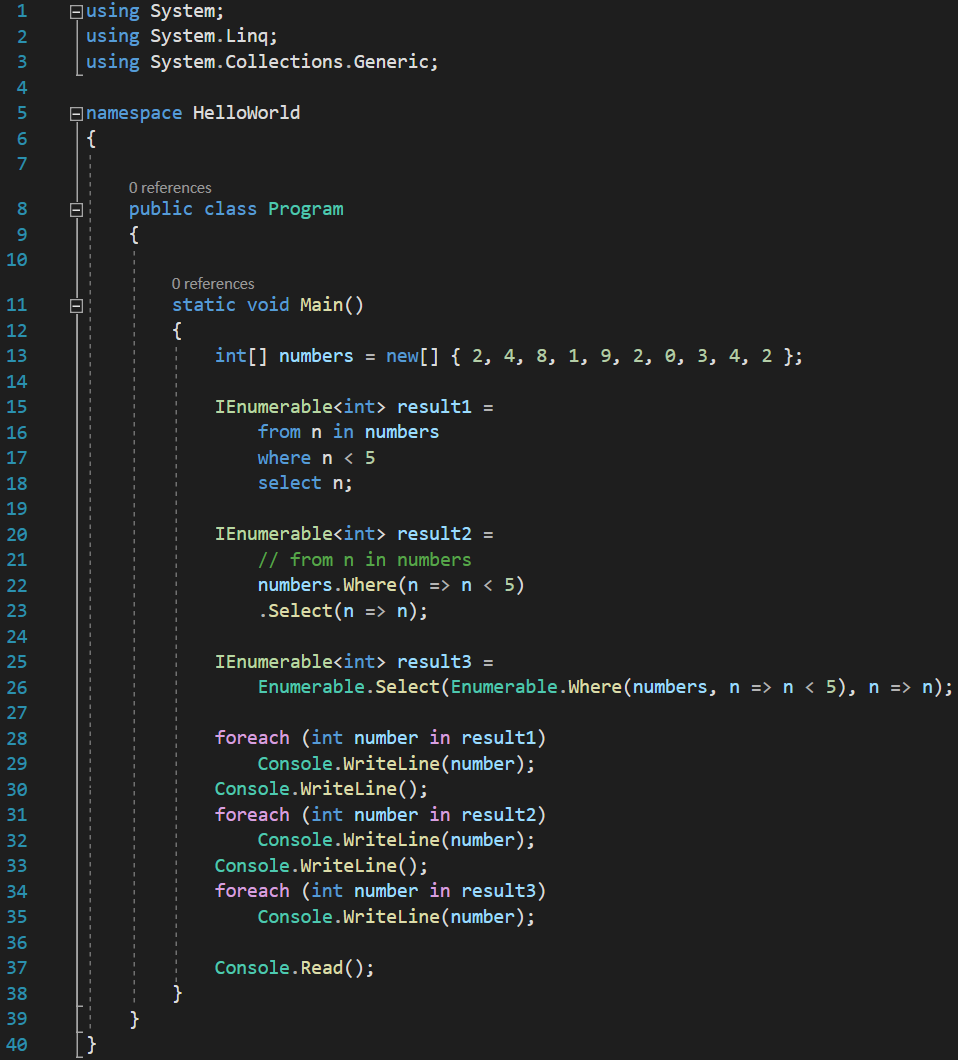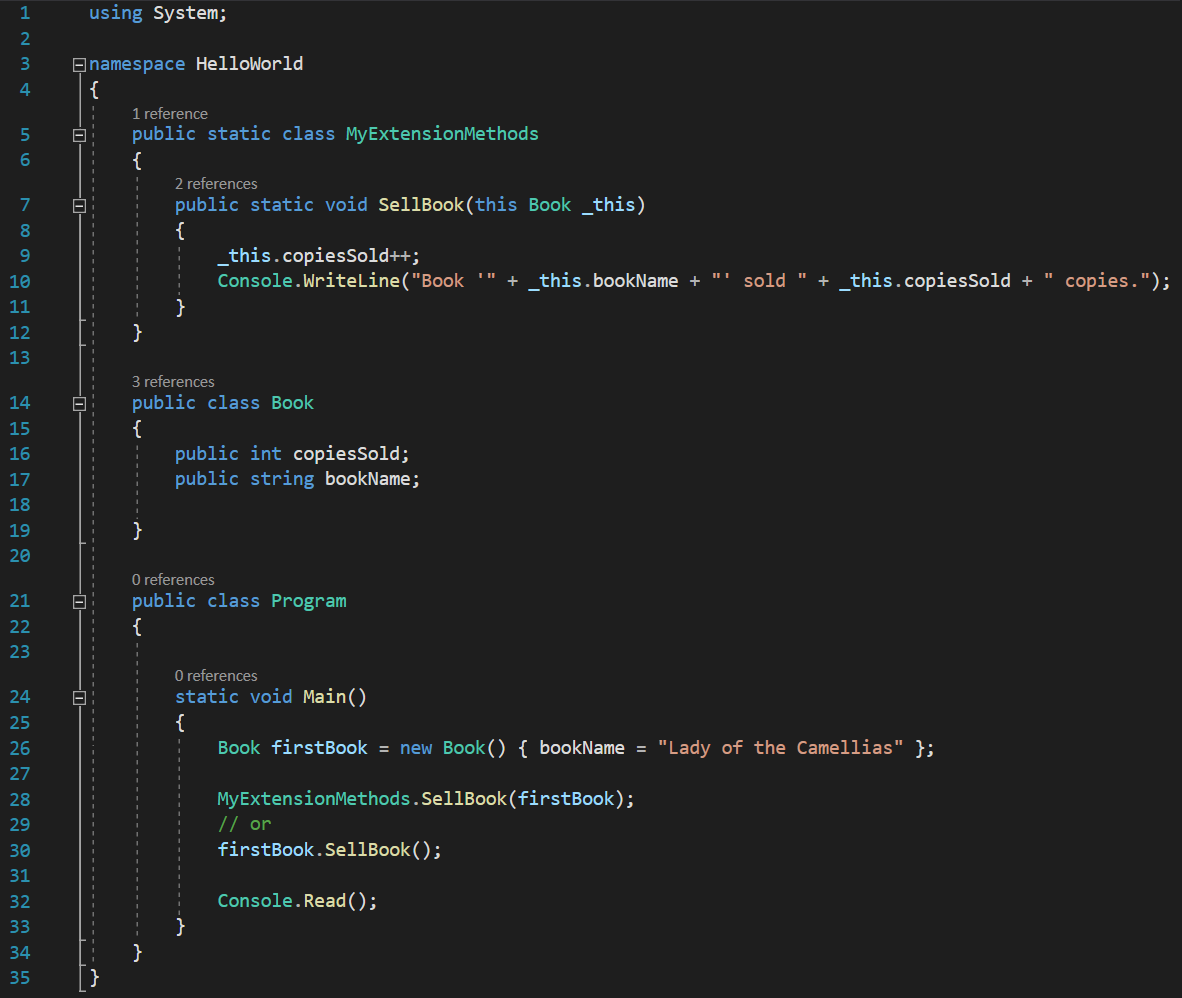Taking an excerpt code from the previous lessons about LINQ, we had these codes:
[raw][/raw]
 If you paid attention to the above code, you probably noticed the Select(n => n) function. If you analyze it a bit, you realize that it’s a lambda expression that all that it does is to take a parameter named n and return it, without any modification.… Read more
If you paid attention to the above code, you probably noticed the Select(n => n) function. If you analyze it a bit, you realize that it’s a lambda expression that all that it does is to take a parameter named n and return it, without any modification.… Read more 
